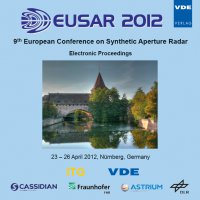The InSAR Scientific Computing Environment
Conference: EUSAR 2012 - 9th European Conference on Synthetic Aperture Radar
04/23/2012 - 04/26/2012 at Nuremberg, Germany
Proceedings: EUSAR 2012
Pages: 4Language: englishTyp: PDF
Personal VDE Members are entitled to a 10% discount on this title
Authors:
Rosen, Paul A.; Gurrola, Eric; Sacco, Gian Franco (Jet Propulsion Laboratory, California Institute of Technology, USA)
Zebker, Howard (Stanford University, USA)
Abstract:
We have developed a flexible and extensible Interferometric SAR (InSAR) Scientific Computing Environment (ISCE) for geodetic image processing. ISCE was designed from the ground up as a geophysics community tool for generating stacks of interferograms that lend themselves to various forms of time-series analysis, with attention paid to accuracy, extensibility, and modularity. The framework is python-based, with code elements rigorously componentized by separating input/output operations from the processing engines. This allows greater flexibility and extensibility in the data models, and creates algorithmic code that is less susceptible to unnecessary modification when new data types and sensors are available. In addition, the components support provenance and checkpointing to facilitate reprocessing and algorithm exploration. The algorithms, based on legacy processing codes, have been adapted to assume a common reference track approach for all images acquired from nearby orbits, simplifying and systematizing the geometry for time-series analysis. The framework is designed to easily allow user contributions, and is distributed for free use by researchers. ISCE can process data from the ALOS, ERS, EnviSAT, Cosmo-SkyMed, RadarSAT-l, RadarSAT-2, and TerraSAR-X platforms, starting from Level-0 or Level 1 as provided from the data source, and going as far as Level 3 geocoded deformation products. With its flexible design, it can be extended with raw/meta data parsers to enable it to work with radar data from other platforms.


